For Vietnam, resilience comes naturally. When the COVID-19 pandemic arrived, the Vietnamese knew that by working together they could weather the crisis. Through two waves of the pandemic, Vietnamese followed the directions of the government and health officials, making the safety of all the country’s first priority. Because of this, the virus was quickly contained, and normal routines returned after only a few weeks of social distancing. Read on to find out more about how Vietnam successfully handled the virus, and what makes the country one of the safest places to visit when borders open again.
Strategy
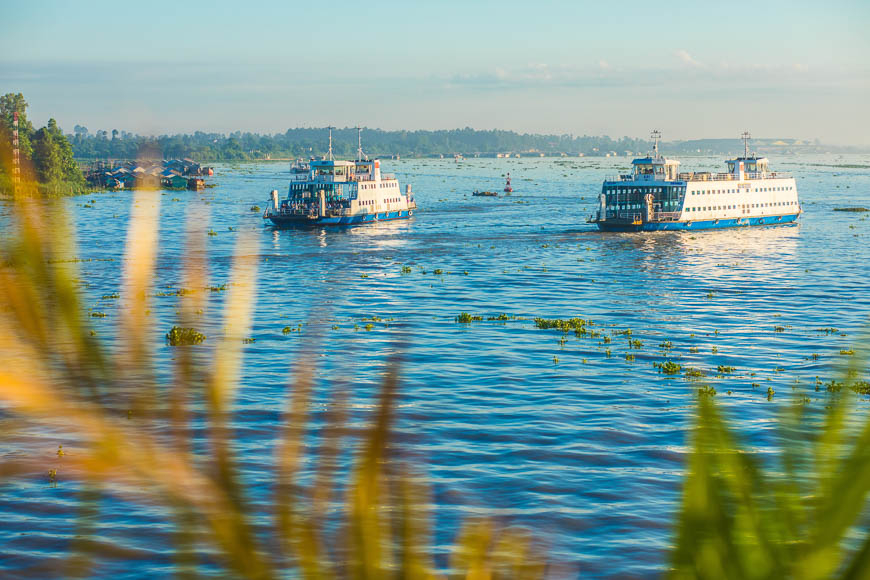
Vietnam has faced several health crises in recent years. When COVID-19 emerged, Vietnam was particularly vulnerable because of its long border with China and limited healthcare resources. The government took decisive action early on to prevent a full-blown outbreak. A week after the first COVID-19 case was confirmed in the country, the Prime Minister declared an epidemic in the country. A National Steering Committee for COVID-19 Prevention was formed to coordinate and direct the government’s strategy in a unified way.
The government relied on contact tracing, widespread testing and targeted lockdowns to prevent the virus from spreading in local communities. Tracing and testing was based on the risk of infection, rather than symptoms. This kept many asymptotic patients from transmitting the virus to others. Vietnam decided early to close its borders to visitors, suspend large gatherings, and require quarantine for all overseas arrivals. Once there were no new risks from outside, Vietnam focussed its full attention on stamping out the virus within its borders.
Preparedness and supplies
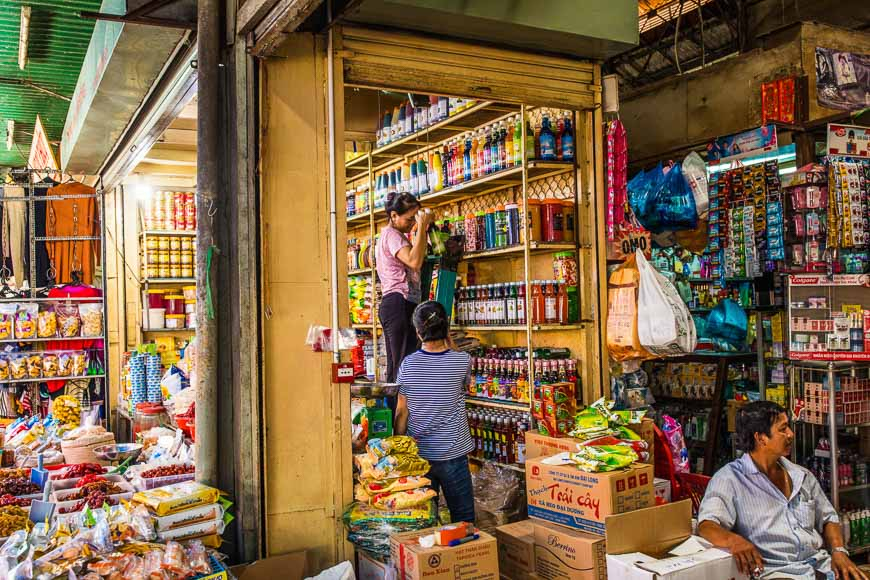
Even before the first COVID-19 cases arrived in Vietnam on January 23, the Ministry of Health began preparing for a possible outbreak. Military barracks were transformed into quarantine camps and field hospitals with thousands of beds made ready. Vietnam set up 45 quick response teams nationwide, and 31 private hospitals organized their own task forces. Testing facilities and health hotlines were quickly opened to the public. Today Vietnam has more than 200 testing centres able to gather up to 46,000 samples a day.
On February 1, the government promised a constant stream of supplies would be available to the public. The Ministry of Health boosted mask production, and all stores in Vietnam were required to carry masks and hand sanitizers for sale. The government decided to cover medical expenses for anyone who caught the virus, and quarantine stays were free for Vietnamese throughout most of the pandemic. Thanks to clear directives, Vietnam did not suffer shortages of food or masks, even during lockdowns, and Vietnamese could take advantage of testing and quarantine.
Read more: Info for travellers on Covid-19 in Vietnam
Containment response
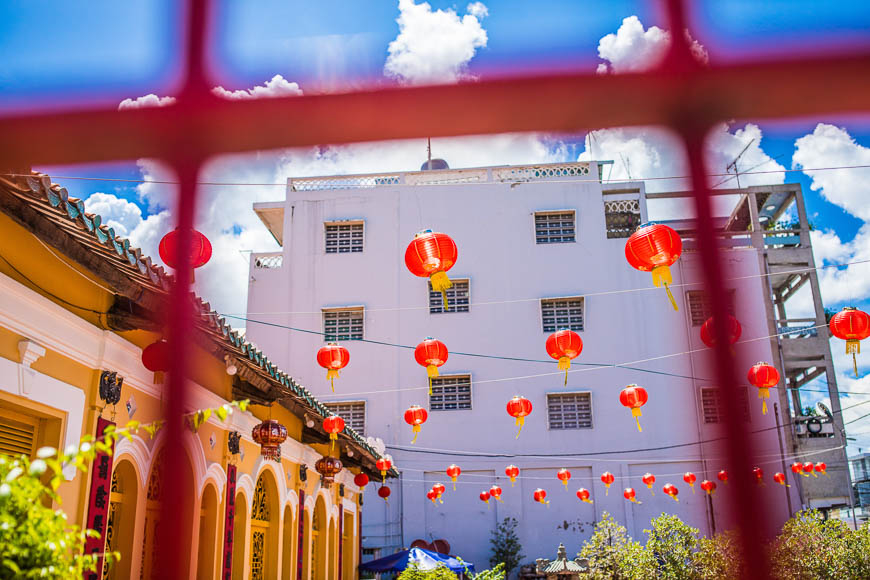
Vietnam used border closures and targeted lockdowns to halt community transmissions. On January 31, Vietnam closed its border with China and over the coming weeks, more closures from affected areas were announced, until Vietnam shut its borders entirely on March 22. Vietnamese and expats returning from overseas were taken directly into quarantine, where they were given repeated tests before being discharged.
Whenever Vietnam experienced a surge in cases, the affected neighbourhoods were quickly sealed off. Affected hospitals, streets, and provinces were placed under 14-day lockdowns. During these periods, the government allotted daily groceries to the people within the confined areas. After Vietnam underwent two weeks of nationwide social distancing in April, the government said it would only confine affected areas, and allow other areas to carry on with precautions in place. Because of this, Vietnam enjoyed long periods with no community transmission, wherein people could meet, relax, and travel with family, even during the pandemic.
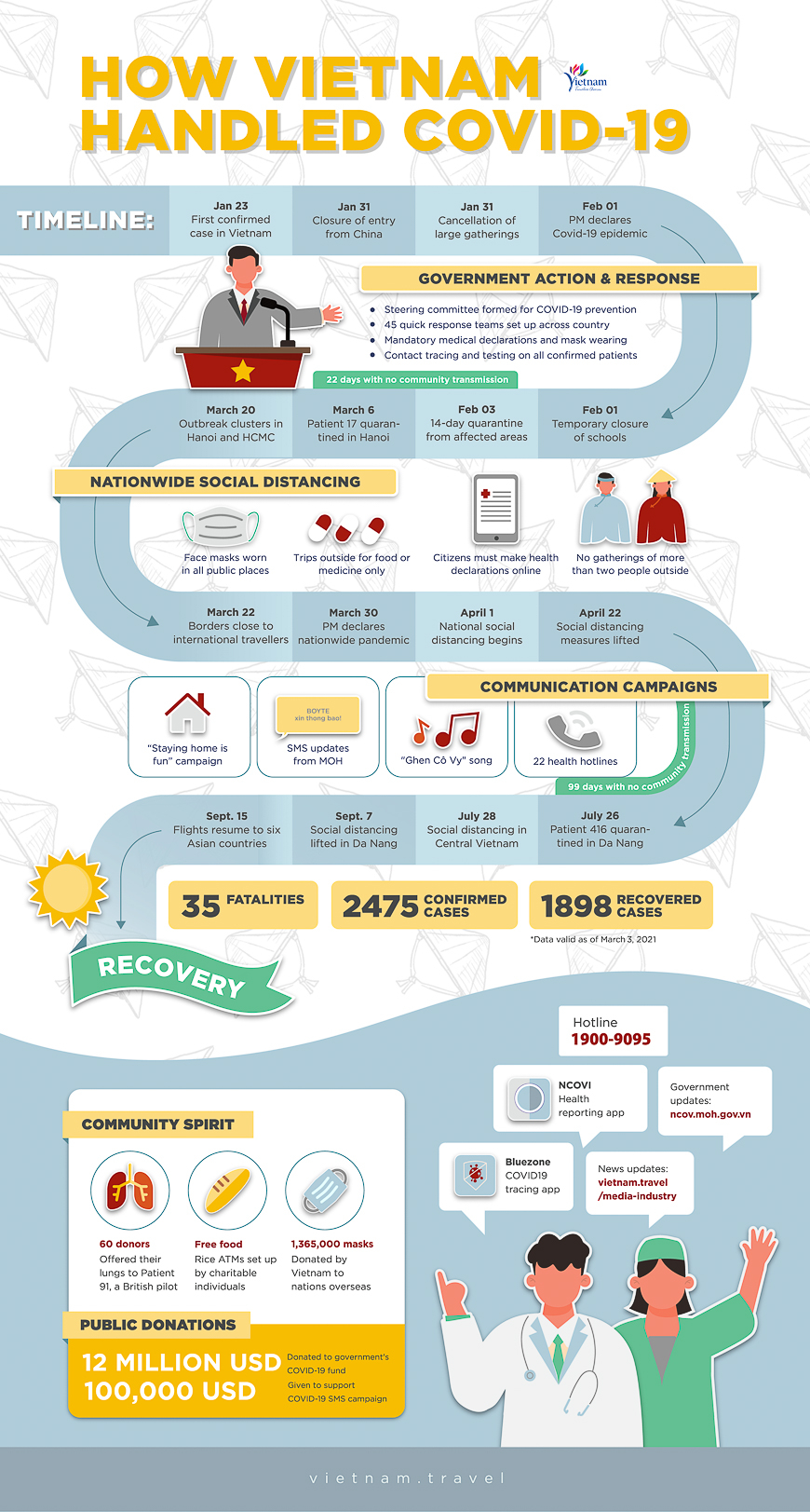
Tracing and testing
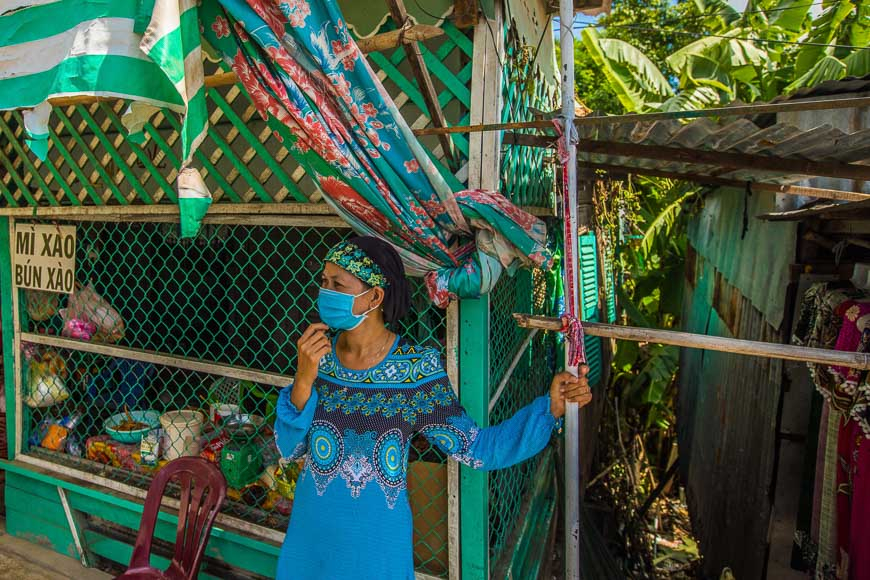
Vietnam chose to adopt third-degree contact tracing, using both manual and hi-tech methods. Health officials tested and quarantined the close contacts of each infected person, whether they exhibited symptoms or not. The contacts of those people in turn were placed in at-home quarantine, and their contacts in turn. Anyone who tested positive was placed in medical care, while those who tested negative self-isolated at home. Everyone in the country was required to fill out medical declarations, and soon the government launched tracing apps for people to identify potential exposure.
From the onset of COVID-19, Vietnam was quick to develop its own testing. On February 25, the World Health Organization (WHO) approved a Vietnamese-made RT-PCR test kit, and other made-in-Vietnam rapid detection kits were ordered and exported around the world. After a cluster of cases appeared in Da Nang in June, health officials in Hanoi performed 120,000 tests on locals returning from the central province. Data compiled by Reuters in April of 2020 shows that Vietnam holds the highest ratio of tests to confirmed cases in the world.
Public information
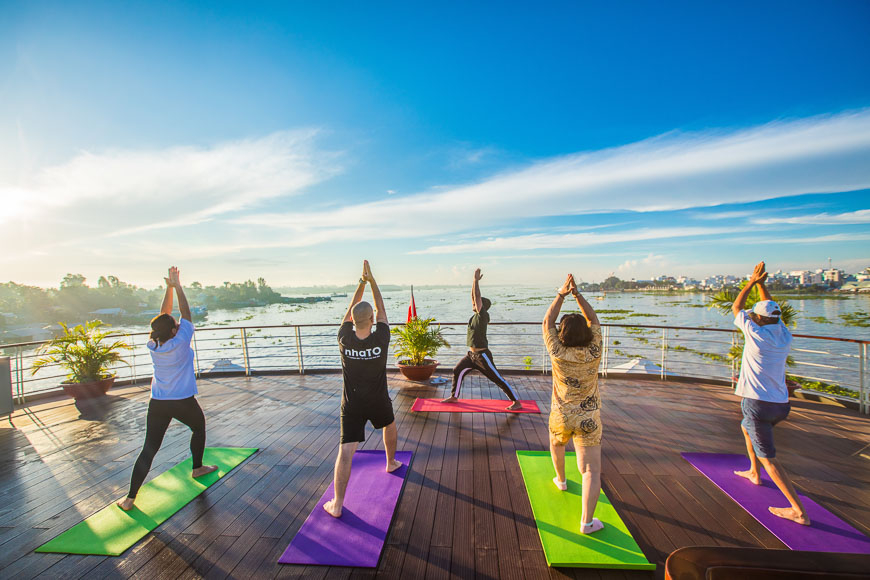
The Ministry of Information took on the task of conveying news and advice to the public. Locals had access to the latest updates via an official COVID-19 web portal, which was updated daily with transparent information on new cases. SMS texts were sent out regularly from the Ministry of Health offering health recommendations and encouraging those with symptoms to call health hotlines.
The communications campaign went a step further when a pop song from 2017 was remixed into an anti-COVID-19 anthem. Named ‘Ghen Co Vy’ (jealous COVID), the catchy tune outlined best practices for repelling the virus. It also garnered more than 65 million views on YouTube, and international attention. Vietnam’s Ministry of Health later collaborated with TikTok and UNICEF on a ‘#ONhaVanVui’ (staying home is fun) campaign, which has more than 10 billion combined views.
Read more: Inspiring stories from Vietnam in Covid-19
Community spirit
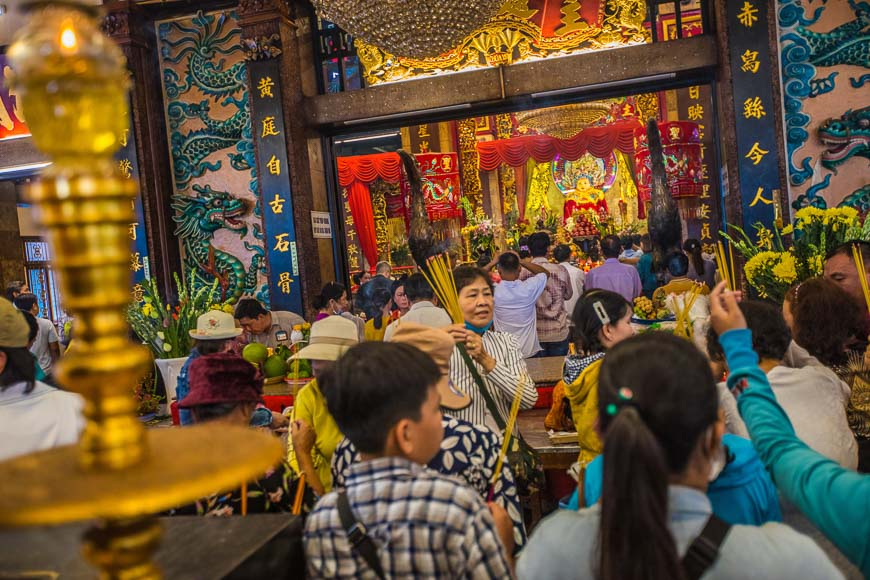
Vietnam’s strong community spirit was an essential element in the fight to contain the virus. Medical students donated time to contact tracing and treating those in quarantine. Soldiers gave up their barracks for quarantined patients. Students and veterans donated savings for relief efforts. Many generous individuals and organizations provided free meals and essentials to those who have lost their income, and Vietnamese together contributed more than 12 million USD in donations to a government fund to buy medical equipment and care for patients in quarantine camps.
Vietnamese generosity extended beyond its borders as well. The country donated more than 420,000 USD worth of masks to nations with masks shortages. In April alone, Vietnam gave 500,000 face masks to five European nations and 300,000 USD worth of medical equipment to neighbouring Laos and Cambodia. Ultimately, it was the collective efforts of the Vietnamese people that helped the nation overcome the challenges of the pandemic.
Further reading:
Timeline of COVID -19 and Vietnam policy actions at a Glance — Open Development Vietnam.
Vietnam’s Pandemic Success Is a Lesson for the World — Global Asia.
Emerging COVID-19 Success Story: Vietnam’s Commitment to Containment — Our World in Data.




